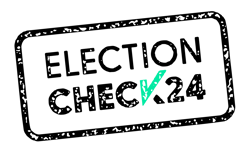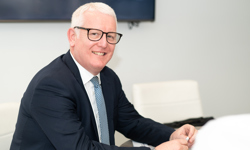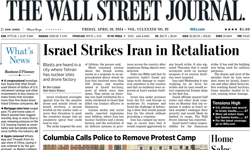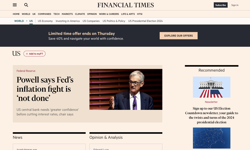Despite the gloomy economic conditions, there was a palpable air of confidence in the room. Whereas previous summits had been dominated by concerns over users’ willingness to pay for anything online other than porn or gambling, there was now a general consensus that people will pay for content.
Haymarket CEO Kevin Costello was particularly upbeat. “We’re making money!” he said. 30% of the company’s revenues now come from data, digital or information services and the industry was rediscovering the classified ad. And, Kevin continued, “our digital revenues are more than compensating for the drop in offline revenues.” He finished by quoting one of his own editors, Brand Nation’s Rich Sutcliffe who said: “Quality journalism incurs costs, but holds value.”
And our content is good, really good. ITV’s Fru Hazlitt said, “all of the big tech companies would kill for our content” and, she continued, because most people are “boring”, so was the majority of UGC! “The branded, expert, authoritative content,” that Kevin Costello referred to was our USP and one that the legions of bloggers, tweeters, and self publishers simply couldn’t match. One of the ad agency guys present said, “publishers are very well placed, because poor quality inventory proliferates.” There was, he said, “a lot of crap out there.”
It was widely recognised that not all inventory was equal, and that an ad placed in a quality context was a much better proposition than one not. Obvious perhaps, but worth saying.
So, the big question was no longer will people pay for content, but how to get them to pay in sufficient numbers to sustain viable media businesses.
The challenge was illustrated by the BBC’s Rory Cellan-Jones, who asked for a show of hands. How many in the room had paid for a news app? The result, not many. And this from a tech savvy digital crowd. It might have been interesting to ask the follow up question, how many in the room had purchased a print newspaper in the past month, but moving on…
The WSJ’s Alisa Bowen was not too fazed by the paltry show of hands. “We’re at the very beginning of this transition,” she said, although, she admitted, “what is scary is how unadventurous publishers are at creating digital products of value”. So, whilst there’s a long way to go before we write off publishers’ chances, we can’t be complacent and, said Fru Hazlitt, we must “be much braver and spend a lot more money in creating content!”
New product development
A high powered panel, including representatives from Facebook and Google, told us how they went about creating valuable new products.
Google’s Benjamin Faes said product was at the heart of their strategy, and described how their senior management team of seven product managers operated in a super matrix organisational structure. Wow. I think that means non-hierarchical. Facebook’s Karla Geci said that all their development was guided by a shared philosophy, namely “whatever we build is social by design”, and that this core set of beliefs allowed people to be very creative. Pearson’s Juan Lopez-Valcarcel said that his company was trying to create an engineering product management culture and that “Mark Zuckerberg-type people were beginning to rise to the top in traditional publishers.”
The panel all agreed that it was important to foster entrepreneurship and to encourage risk taking. It was ok to fail, they agreed, echoing one of the enduring themes of successive AOP summits. But telling staff it’s ok to fail is one thing, getting them to act on it is another, because, as Google’s Larry Page was quoted as saying, “I want you all to take risks, but I know I’m not taking a risk telling you that, because you won’t do it!”
To be fair to the Google workforce, they have had their fair share of failures. As Benjamin frankly acknowledged, Wave and Buzz had seemed like good ideas at the time, but clearly did not resonate with users. But no one is suggesting that serious long term damage was done to the Google brand by these unsuccessful initiatives.
Google, he said, put innovation at the heart of company culture and everyone is graded on it quarterly.
And the process to market? Develop small, lean focused products; run organised experiments, get feedback and adapt. Get it out there. “Done is better than perfect,” said Faes.
And the lessons for publishers are? Be nimble, be quick, foster innovation, accept failure as the price of success, have a clear focus, keep it small and get it out there! Simple.
As publishers, we face a baffling array of choices. Apple or Android, HTML5 or native app, video, social media, Twitter, paywalls. And is Apple friend or foe? Aaaaaagh!*?$”)(^ Why can’t life be simple?
Thankfully, some good advice was to hand. On the friend or foe question, the consensus was that it was an outdated question. For a start, the concept of ‘friend’ was naïve. All companies will do what’s in their best commercial interests, or what they perceive to be in their best commercial interests. To think otherwise is delusional. Taking Apple, Deloitte’s Ed Shedd said, “new platforms give access to scale markets, so publishers have to collaborate”. But that did not mean ceding to Apple’s every request. Publishers need to collaborate as an industry so as to present a more co-ordinated approach to the platform owners. WSJ’s Alisa Bowen agreed: “new platforms are valuable and help us win new audiences but publishers have to take responsibility for our own future and negotiate better deals, and certainly not cede that all important direct relationship with the customer.”
The other bit of good advice came from Econsultancy’s Ashley Friedlein who said that “data helps us know what we should be prioritising”. If we were to simply go with the industry vibe, we would all be introducing social media platforms, video channels, apps, mobile sites, irrespective of whether or not those were appropriate courses of action for our companies. The only way of making rational decisions was to study the data, through tools like Google Analytics, to build a clear idea of where your development resource would be best spent. For Econsultancy, social media was no better than average as a source for new business, mobile is not that big and not growing much, HTML5 is way too slow and online video is a marginal activity. What continues to be important for Econsultancy is email. Horses for courses.
Data, data, data
Data was the big theme of the day. In fact it worked its way into most sessions, not just Ashley’s.
Haymarket’s Kevin Costello described how the company has focused on “gated strategies” over the past year, collecting registration data to help segment their user base and then using that data to offer bundled subscriptions. In the past year, Brand Republic had taken its registered user pool from zero to 65k.
The need for a more intelligent application of data was at the heart of winning higher ad rate yields for publishers. The panel of ad agency big wigs was unanimous in saying that publishers had great content which should enable them to charge higher prices for their inventory, but that the lack of data they were providing was hindering those efforts. As GroupM’s Jakob Nielsen complained: “a substantial proportion of publishers were not using data intelligently to segment their inventory”. Take IKEA he said. They will know, at any given time, exactly how many couches they have in any given store. Publishers need to be similarly well acquainted with their stock, and he was frankly surprised publishers had not got to grips with this by now.
ITV’s Fru Hazlitt, in describing the huge commercial potential of VOD, said that the main hurdle to exploiting that potential was lack of data. “We need to be capturing data about VOD consumers” to enable the proper targeting of ads.
And it wasn’t just in the marketing and commercial arenas that data was paramount; it was also instrumental in the provision of content. The BBC’s Cait O’Riordan spoke about the BBC’s mind-blowingly exciting video and online plans for next year’s Olympics coverage, and a key component of that was “dynamic semantic publishing” which used data tags to overlay additional relevant information for the benefit of the viewer.
In short, according to AOP’s Tim Cain, in an article in the next issue of InPublishing magazine, “data is the new oil”.
And finally … the Tweet wall! The biggest cheer of the day came when Fru Hazlitt faced down the tech team in the hall and forced them to remove the Tweet wall during her presentation. I mentioned last year, that I thought having Tweets projected onto a screen behind the presenter was extremely distracting, but Tweet walls now seem to be part and parcel of the conference scene. As it turned out, Fru hadn’t realised it was the Tweet wall and thought that it was simply someone else’s slide she was asking to be taken down! Clearly, an unwitting heroine for the anti-Tweet wall movement.










